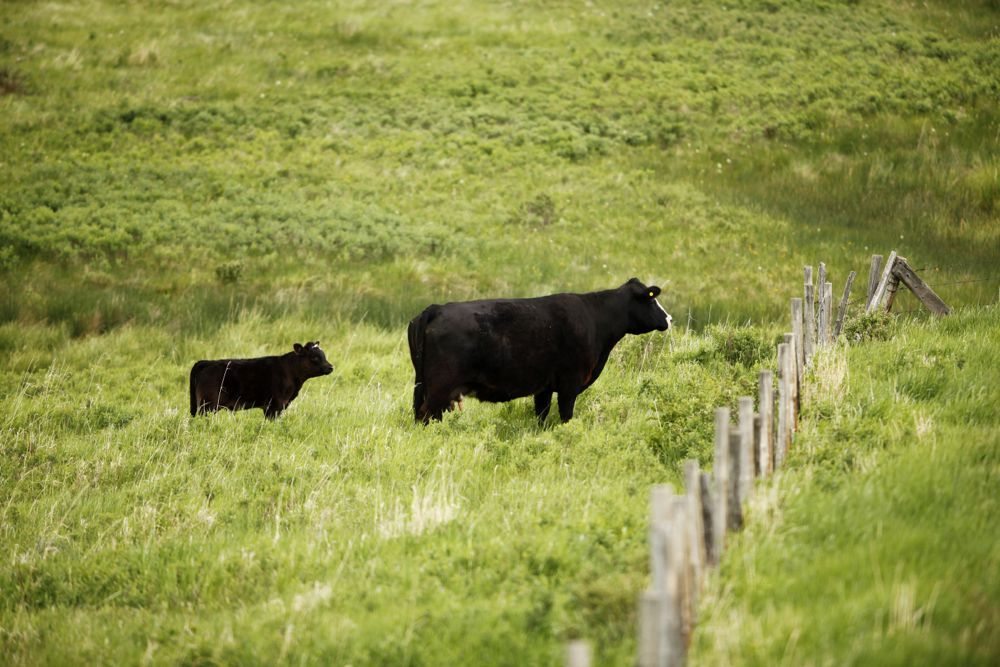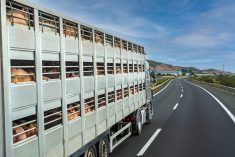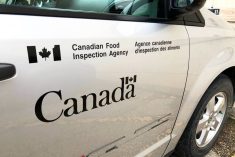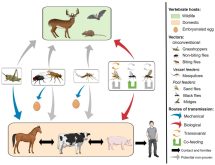Canada’s food safety agency is still tracking down the last herdmates of the country’s 19th domestic case of BSE, but will otherwise assume the Alberta cow most likely caught the disease from traces of proteins in its early feed.
The Canadian Food Inspection Agency on Nov. 30 submitted its final report on Case 19 — a 70-month-old purebred black Angus beef cow — to the World Organization for Animal Health (OIE), describing the case as “resolved.”
A feed-borne infection is “likely the source” of BSE (bovine spongiform encephalopathy) in Case 19, Dr. Martine Dubuc, CFIA’s chief food safety officer, said in the report.
Read Also
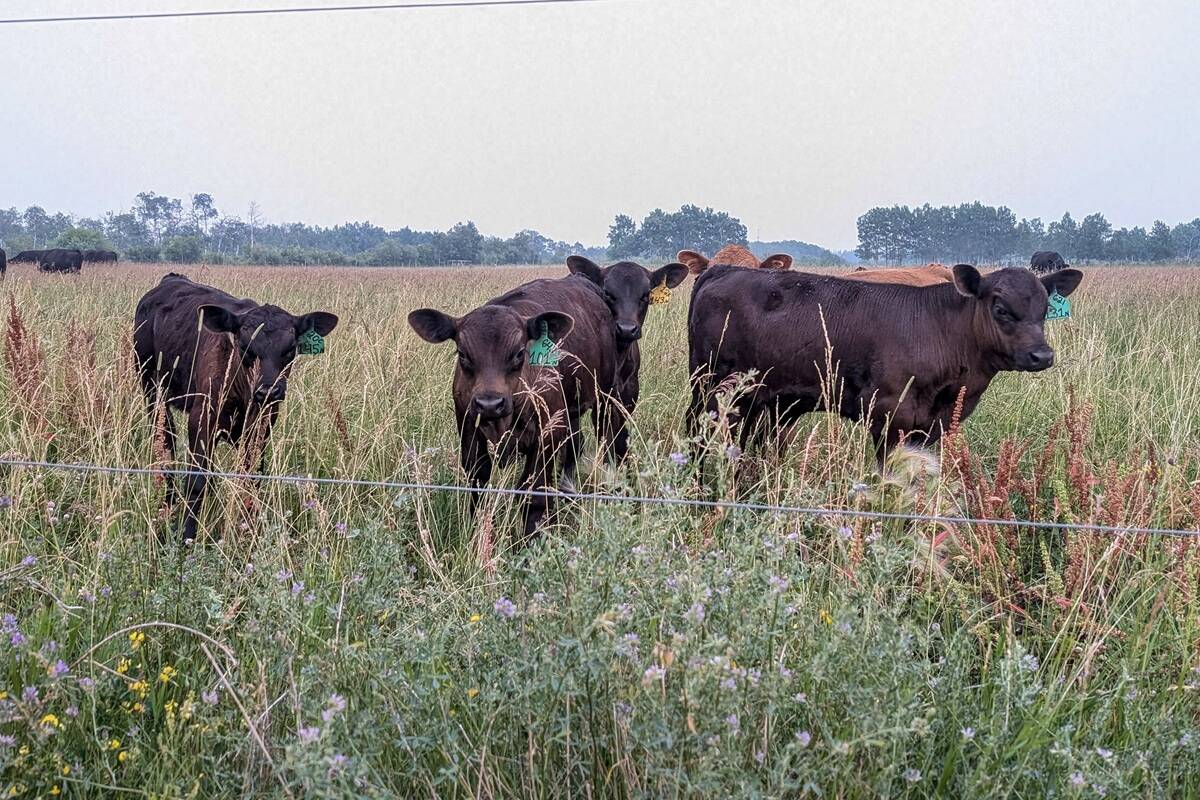
‘Not a happy Trump supporter’: U.S. Cattle ranchers hit by push for lower beef prices
Much like the price of eggs during the Biden administration, the cost of beef has become an emblem of the affordability crisis in Donald Trump’s America. Beef prices hit record highs earlier this year as the cattle herd shrank and consumer demand remained strong.
“The feed investigation was unable to identify a specific source, but the carryover of a small amount of residual contaminated feed on-farm is the most plausible explanation.”
Born in March 2009, Case 19 was euthanized in February this year after its owner reported it as a “downer” cow, fitting the criteria for testing under the national BSE surveillance program, which confirmed the disease.
Case 19 also was Canada’s first case to be born after the country’s “enhanced” feed ban took effect in 2007, as well as Canada’s first to be born on the same farm as a previous Canadian BSE case — Case 17, found in 2010.
That said, “the detection of this case does not change our OIE risk status,” Dubuc wrote in her report to the OIE. “Our continued surveillance confirms that Canada has an effective feed ban in place.”
The enhanced feed ban set up in 2007 was an expansion of Canada’s 1997 ban on the feeding of ruminant tissues to other ruminants.
The enhanced ban also blocks the use of specified risk materials (SRMs, including nervous system tissues believed to harbour the BSE-causing agent) from rendered ruminants in any animal feeds, pet foods or fertilizers — in short, Dubuc wrote, taking SRMs right out of “the entire terrestrial and aquatic animal feed chains.”
CFIA officials said in February it’s not unheard of for countries that have had BSE in their domestic herds to see cases appear after comprehensive feed bans are imposed. Spain, for one, experienced such cases up to four years afterward, the agency said.
No “significant events” of feed contamination could be linked to Case 19, but the potential for carryover couldn’t be discounted, CFIA said in its report.
Given the enhanced feed ban and the “rigorous inspection oversight by the CFIA,” contamination of both prohibited and non-prohibited materials with SRM at either a slaughter establishment or a rendering plant, “would, in all likelihood, be highly improbable,” the agency said.
“As a result, the carryover of a small amount of residual contaminated feed associated with the earlier case (Case 17) on the same birth farm is the most plausible explanation for BSE Case 19.”
The birth farm’s “bin management and storage practices… could not eliminate the possibility that feed products produced prior to the enhanced feed ban may have remained (to some extent) on the farm” after the enhanced feed ban kicked in, CFIA said.
However, CFIA said, there was also “no indication that feedstuff was stored for extended periods” and, given the nature of the feed — forages, commercial feed and supplements made specifically for cattle, with no on-farm mixing — there would have been “no reason to consider the potential that feed might be contaminated.”
It’s important to note, CFIA said, that while Case 17 most likely became infected in 2004, it wasn’t detected as a BSE case until February 2010 — nearly a year after Case 19 was born at the same farm and likely became infected.
“Considering the management practices and timelines of the two cases, it was not possible to rule out the potential for the carryover of a small amount of residual contaminated feed on the farm.”
Cohorts
CFIA’s traceout of birth cohort animals — 746 in all — is “ongoing and expected to be completed for the end of 2015” with just 30 animals still to be traced, the agency said.
Of the other 716, 10 have been deemed “untraceable,” while the rest are confirmed to have died or to have been slaughtered, exported, or exported for immediate slaughter, or are “presumed” either dead or slaughtered.
While feed cohorts — animals exposed to the same feed supply — are also usually traced in BSE investigations, Case 19’s feed and birth cohorts were “indistinguishable,” CFIA said, because all animals from the birth cohort had access to the same feed as Case 19 in its first year of life.
As for Case 19’s calves, CFIA noted, the OIE no longer considers a BSE-positive cow’s calves to be “equivalent-risk” animals.
However, the agency said, it did track down the calves Case 19 had in the 24 months before its diagnosis with BSE, “to satisfy specific country export requirements.”
That trace found Case 19’s 2013 calf died of scours soon after birth, and its 2014 calf is “currently under quarantine” at its birth farm — the same farm where Case 19 was sampled for BSE testing.
In all, CFIA said, the results from a Canadian birth cohort analysis, updated to include Case 19, confirm that Canada’s overall risk profile for BSE “has not changed.”
Case 19, however, remains a setback in Canada’s efforts to level up from “controlled risk” to “negligible risk” for BSE. By OIE standards, a country’s youngest case of BSE must have been born 11 years before “negligible risk” status can be considered.
Up until February, Canada had been on track to start that process in August, 11 years after Case 18’s birth. Case 19’s birthdate delays “negligible risk” status for Canada until 2020 at the earliest. — AGCanada.com Network

